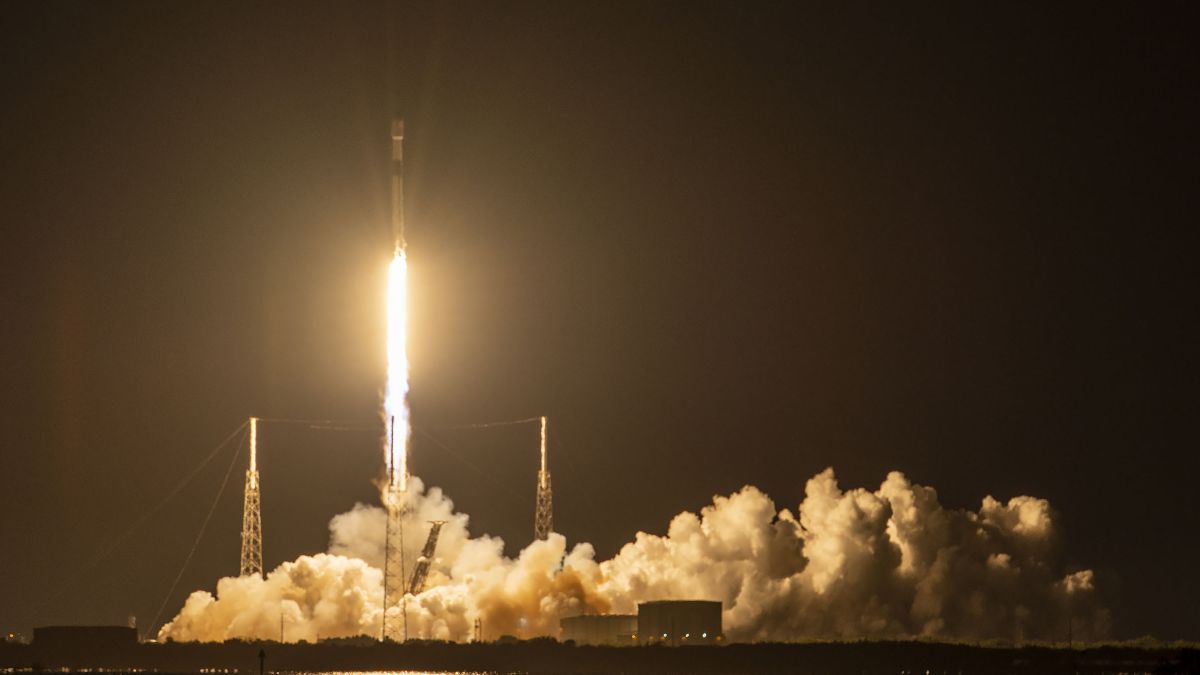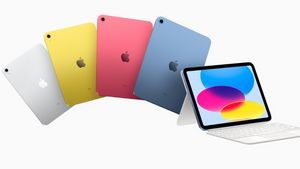JAKARTA - Space X launched 54 next-generation Starlink internet satellites into orbit on Wednesday December 28 from the Cape Canaveral Space Force Station in Florida.
This marks the first batch of up to 7.500 units of the upgraded model, known as 'Gen 2', to be sent into space on a Falcon 9 rocket.
The project is said to be more powerful than the first generation model, so it can handle more data traffic, but can also deliver internet services directly to smartphones.
The rocket took off at 09:43 a.m. GMT and the second stage, carrying the satellite, separated from the first stage about two and a half minutes later.
While the second stage continued into space, the first returned to Earth, landing on the drone ship 'A Shortfall of Gravity' in the Atlantic Ocean about eight minutes after liftoff.
Falcon 9 launches 54 Starlink satellites to low-Earth orbit; completes SpaceX’s 60th mission of 2022! pic.twitter.com/MIstToPIyL
— SpaceX (@SpaceX) December 28, 2022
This is the reusable rocket's eleventh flight, and SpaceX will also attempt to recover its two-section nose cone that flew down to Earth equipped with a parachute.
The launch also marked SpaceX's 60th successful launch of the year, which set a new record for Elon Musk's company, as it previously set in 2021 with 31 launches.
However, they do have plans for at least one more Starlink launch mission before the new year rolls around. The satellite separated from the second stage of the mission that morning less than 19 minutes after liftoff.
SpaceX currently has about 3.300 Starlink satellites in orbit, and last week, Musk boasted that they now have one million active customers in the world.
They provide low-latency, high-speed internet at an affordable cost, often to remote areas without existing WiFi, and this year expanded to yachts, cruises, and RVs.
In testing, the service has been shown to offer speeds of up to 200 megabits per second, which is higher than can be achieved by copper cables typically used in more remote areas.
However, according to a report from Ookla, Starlink has seen its worldwide speeds slow by up to 54 percent in some countries due to more use.
Jessie Anderson, SpaceX's production and engineering manager told in the launch live broadcast that day, confirmed that the Gen2 satellite allowed them to "add more customers and deliver faster service."
"This launch marks the first of a series of upgrades to the Starlink network," Anderson said as quoted by the Daily Mail. “Under our new license, we are now able to deploy the satellite to a new orbit which will add even more network capacity.”
SpaceX received approval to deploy 7.500 Gen2 satellites from the US Federal Communications Commission (FCC) on December 1. However, the company had applied for a permit to launch 30,000 of them before the end of the decade, which was not accepted by the FCC.
SEE ALSO:
The FCC limits the number of these satellites due to 'concerns about orbital debris and space safety'. Five days later, SpaceX submitted another application to the FCC, seeking permission to equip the satellite with 'direct-to-mobile' hardware.
This will allow users to connect their phones to the network to increase their range.
On August 25, Musk and T-Mobile CEO Mike Sievert announced their vision to team up to signal for "virtually anywhere for [T-Mobile's] customers to see the sky."
At the time, the richest man in the world said that a Gen2 satellite equipped with the hardware had to be 23 feet (7 m) long and weigh 1.25 tons. It was much heavier than the first generation Starlink satellites, which weighed about 660 pounds (300 kg).
As a result, they need to be launched by Musk's giant Starship rocket, which is in development and could put humans on the moon by 2025.
However, he also alluded that SpaceX could build a "mini" version of a Gen2 satellite that can be launched on a Falcon 9 rocket in the interim.
Documents submitted to the FCC in October detail three different configurations for the Starlink Gen 2 satellite.
One of them, named 'F9-1' has roughly the same dimensions and mass as the current V1.5 satellite, and therefore may be aboard the current Falcon 9.
It is currently unclear whether the satellite launched this morning will be used to test new software or hardware that will enable cellular connectivity.
The English, Chinese, Japanese, Arabic, and French versions are automatically generated by the AI. So there may still be inaccuracies in translating, please always see Indonesian as our main language. (system supported by DigitalSiber.id)


















